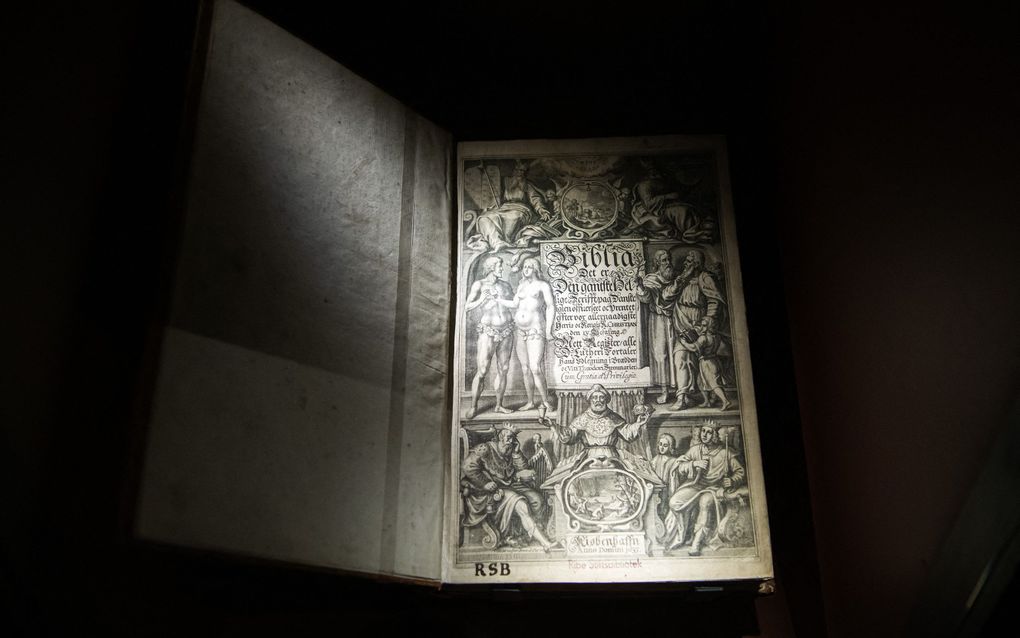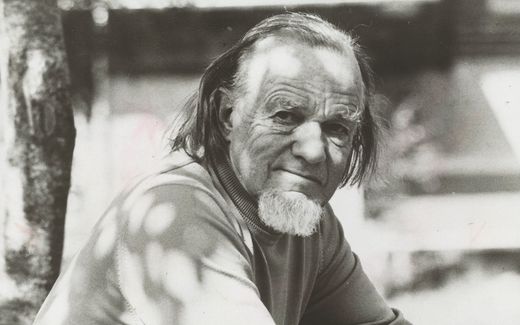After 500 years, we know that the New Testament in Danish was a turning point

The Luther Bible is displayed at the HEX!, a museum of Witch Hunt in Ribe, Denmark. Photo AFP, Jonathan Nackstrand
Northern Europe
1524 was the year of a big change in Denmark. It was not so much the coronation of Frederick I as Danish king. It was a book that changed the history. In August 1524, the New Testament was printed in Danish for the first time.
Receive CNE's weekly newsletter? Feel free to sign up here.
Of course, the first sparks came from Saxony.
Martin Luther had triggered the Reformation in Wittenberg, Saxony, seven years earlier. Its consequences were soon felt everywhere. In those times, the Roman Catholic Church virtually controlled all of life in Western Europe. In the sixteenth century, however, discontentment began to rise, both within the church and in society at large.
The heart of the Reformation was the recognition that Scripture, and Scripture alone, had ultimate authority, even over the Catholic hierarchy. Luther realised that his people needed to be able to read and understand the Bible.
But at the time, the Bible existed only in Latin. The first step was thus to translate the Bible, a task that Luther began in German. By 1522, the first German New Testament was thus published.
Turmoil in Denmark
While the Reformation was spreading fast in the German lands, Christian II was king in Denmark was dealing with turmoil with the nobility of his country. Finally, the nobles turned against the king and Christian II was forced to flee from the country in 1523. But where could he possibly go? The exiled king was none other than the nephew of Frederick the Wise, the German prince that protected Luther. The obvious option was thus the residence of the prince in Wittenberg.
However, what seemed a sad end for Christian turned into a blessing, not only for him, but for the future of Denmark. In Wittenberg, Christian and his wife Isabella heard Luther’s preaching and they were deeply moved. In fact, it was during his time in exile in Wittenberg that Christian adopted the Lutheran doctrines.
Like Luther, he also understood that the Danes needed to be able to read the Scriptures in their own language. Christian appointed his closest friend for the task, the former mayor of Malmö, Hans Mikkelsen. Contrary to most of the nobility, he had remained loyal to Christian, and was also forced to flee to Germany. Like his king, he also embraced the Lutheran doctrines there.
Uncertainty
Luther’s doctrines had already begun to spread in Denmark even before the exile of Christian II. But when his successor, Frederick I, was crowned king of Denmark on the 7th of August 1524, there was uncertainty in the air. Would the new king allow the Reformation to continue spreading in Danish lands? Or would he seek to protect the Roman Catholic hierarchy?
Initially the king seemed to side with the Roman Catholic church. But eventually, Frederick I showed himself to be lenient towards the Reformation.
In fact, it was during the month of his coronation that the first Danish New Testament was completed. Mikkelsen’s translation of the New Testament, based on Luther’s German translation, was sent from Germany to Antwerp (in the Low Countries, presently in Belgium), a hub for the Reformation at the time. And from Antwerp’s harbour, the precious work was shipped to Denmark.
With the translation now available, the Reformation continued to spread in Denmark, particularly among the peasants. Soon, two major centres emerged. The first was Viborg, Northern Jutland, where Hans Tausen and his associate Jørgen Sadolin freely preached the evangelical doctrines to crowds in the city cathedral. The second was Malmö, the city of Hans Mikkelsen, where Claus Mortensen was allowed to preach the Lutheran doctrines in spite of initial opposition from the city council.
The spread of the Reformation and the publication of the New Testament in Danish had a deep and lasting impact in all areas of Danish society.
Impact on Education
Because the heart of the Reformation was the recognition that the Bible had supreme authority, the Reformers wanted everyone to be able to read and understand the Bible in their own language. But translating the Bible was not enough.
For people to be able to read and understand Scriptures, they needed education. It was for this reason that Luther became a champion for universal Christian education.
Translating the Bible and spreading education were thus two main activities of the Reformers. It took until 1550 before the entire Bible was available in Danish. However, universal Christian education took longer to achieve.
Offspring
It was only in the eighteenth century that significant advances were made for the spread of education. At that time, the Pietist movement, an offspring of the Reformation, had made progress in the Lutheran lands. The movement emphasized the conversion of the heart, but also pursued the Reformation principle of Christian education for all.
King Frederick IV became a Christian through the Pietist movement. Quite naturally, he took on the task to spread education in his kingdom. During his reign, 240 rytterskolers (cavalry schools, because one of the objectives was to improve the cavalry in Denmark, during the Great Nordic War) were established all over the country.
Today, universal education is taken for granted in Denmark. Just as elsewhere in the West, it is a recognised fact that education has raised the living standards of the entire population. Yet, the reality would have been quite different if not for the Reformation. The 500th anniversary of the first Danish New Testament is therefore a great opportunity to thank God for what he has done for the kingdom of Denmark.
Related Articles










